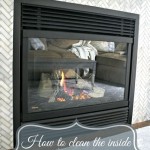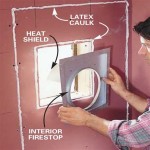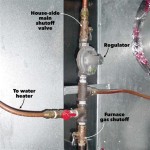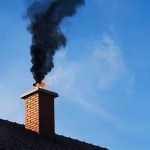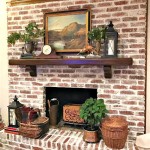Lava Rocks for Gas Fireplace: Enhancing Aesthetics and Performance
Lava rocks are a popular and practical choice for enhancing the functionality and visual appeal of gas fireplaces. These volcanic rocks offer several benefits, ranging from improved heat distribution to a more natural and aesthetically pleasing flame presentation. This article delves into the characteristics, advantages, selection criteria, installation guidelines, and maintenance practices associated with using lava rocks in a gas fireplace.
Lava rocks are formed from molten lava that cools and solidifies after volcanic eruptions. The rapid cooling process creates a porous structure, which is a key characteristic contributing to their utility in gas fireplaces. These rocks are naturally occurring, typically readily available, and relatively inexpensive compared to other fireplace media options. Their dark, earthy tones provide a contrasting backdrop that accentuates the vibrant colors of the flames, creating a visually appealing focal point in any room.
Understanding the Properties of Lava Rocks
The effectiveness of lava rocks in a gas fireplace stems from their inherent physical properties. Their porous structure allows them to absorb and radiate heat efficiently. This leads to a more consistent and even distribution of warmth throughout the fireplace area, improving overall heating performance. The porous nature also increases the surface area available for the gas flames to interact with, creating a fuller, more natural-looking fire.
Lava rocks are also remarkably durable and resistant to high temperatures. They can withstand the intense heat generated by gas fireplaces without crumbling, melting, or emitting harmful fumes. This durability ensures that they maintain their structural integrity and aesthetic appeal over an extended period, making them a cost-effective investment.
Furthermore, lava rocks are generally inert and chemically stable. They do not react chemically with natural gas or propane, minimizing the risk of releasing unwanted odors or pollutants into the environment. This inherent stability makes them a safe and environmentally sound choice for use in gas fireplaces.
The size and shape of lava rocks also contribute to their effectiveness. They are typically available in various sizes, ranging from small pebbles to larger chunks. This allows for customization of the flame pattern and heat distribution. Irregular shapes create more turbulence in the flame, resulting in a more dynamic and visually interesting fire.
Weight is another factor to consider. Lava rocks are comparatively lightweight due to their porous nature. This reduces the strain on the fireplace's burner system and support structure, preventing potential damage over time. The lighter weight also makes them easier to handle and install.
Advantages of Using Lava Rocks in a Gas Fireplace
The adoption of lava rocks in gas fireplaces presents numerous advantages, enhancing both the functional and aesthetic aspects of the fireplace.
Enhanced Heat Distribution: The porous structure of lava rocks facilitates even heat distribution throughout the fireplace. The rocks absorb heat from the flames and radiate it outward, creating a more consistent and comfortable warmth in the surrounding area. This improves the overall heating efficiency of the fireplace and reduces hot spots.
Improved Flame Appearance: Lava rocks create a more natural and visually appealing flame pattern. The irregular shapes and textures of the rocks provide a diverse surface for the flames to dance across, resulting in a fuller, more realistic fire. The dark color of the rocks also provides a striking contrast to the bright flames, enhancing their visibility and visual impact.
Cost-Effectiveness: Compared to other fireplace media options, such as glass beads or ceramic logs, lava rocks are relatively inexpensive. This makes them an accessible and budget-friendly choice for homeowners looking to enhance their gas fireplace without incurring significant costs. Their durability also contributes to their cost-effectiveness, as they typically do not need to be replaced frequently.
Ease of Installation and Maintenance: Lava rocks are simple to install and require minimal maintenance. They can be easily arranged around the burner of the gas fireplace without any specialized tools or expertise. Occasional cleaning may be necessary to remove dust or debris, but this can be done quickly and easily with a soft brush or vacuum cleaner. This ease of use makes them a convenient choice for homeowners of all skill levels.
Natural Aesthetic Appeal: Lava rocks offer a natural and earthy aesthetic that complements a variety of interior design styles. Their dark, textured surface creates a rustic and inviting ambiance, adding warmth and character to any room. They can be used to create a variety of visual effects, from a subtle and understated look to a bold and dramatic statement.
Compatibility with Different Gas Fireplace Types: Lava rocks are compatible with a wide range of gas fireplace types, including both natural gas and propane models. They can be used in vented and ventless fireplaces, as well as in both indoor and outdoor settings. This versatility makes them a suitable choice for a variety of applications.
Selecting, Installing, and Maintaining Lava Rocks
To maximize the benefits of using lava rocks in a gas fireplace, it is important to select the appropriate type and size of rocks, install them properly, and maintain them regularly.
Selection Criteria: When selecting lava rocks for a gas fireplace, it's important to consider the size, shape, and color of the rocks. Choose rocks that are appropriately sized for the fireplace and burner system. Smaller rocks may be suitable for smaller fireplaces, while larger rocks may be needed for larger fireplaces. Select rocks with irregular shapes to create a more natural and dynamic flame pattern. The color of the rocks should complement the overall aesthetic of the room. Darker rocks tend to provide a better contrast to the flames, but lighter rocks can also be used to create a softer and more subtle look.
Installation Guidelines: Before installing lava rocks, ensure that the gas fireplace is turned off and cooled down completely. Arrange the rocks around the burner in a manner that allows for adequate airflow. Avoid blocking the burner ports, as this can impede gas flow and reduce the efficiency of the fireplace. Distribute the rocks evenly around the burner, creating a uniform layer that covers the entire area. Avoid piling the rocks too high, as this can restrict airflow and create a fire hazard. It is recommended to consult the gas fireplace manufacturer's instructions for specific installation guidelines.
Maintenance Practices: Lava rocks require minimal maintenance, but occasional cleaning may be necessary to remove dust or debris. Use a soft brush or vacuum cleaner to gently remove any loose particles from the surface of the rocks. Avoid using water or harsh chemicals, as these can damage the rocks or affect the performance of the fireplace. Inspect the rocks regularly for any signs of damage, such as cracks or crumbling. Replace any damaged rocks promptly to prevent potential hazards. It is also recommended to have the gas fireplace inspected and serviced regularly by a qualified technician to ensure that it is operating safely and efficiently.
Lava rocks, while durable, can accumulate soot or residue over time. This residue can diminish their visual appeal and potentially affect their heat radiating properties. Periodically removing the rocks and gently brushing them off, or even rinsing them if necessary and allowing them to dry completely before reinstallation, can help maintain their condition.
It is paramount to always adhere to the manufacturer's guidelines for both the gas fireplace and the lava rocks. These guidelines provide crucial information regarding safe usage and maintenance, and can prevent potential accidents or damage to the fireplace system.
In summary, lava rocks offer a practical and aesthetically pleasing solution for enhancing the performance and visual appeal of gas fireplaces. Their inherent properties, combined with their ease of installation and maintenance, make them a popular choice for homeowners seeking to create a warm and inviting atmosphere in their homes.

Lava Rock Vs Fire Glass Blog Fireplace And Chimney Authority

Lava Rock 10 Things To Know About Fire Pit Rocks Buyer S Guide 2024

Fire Pit Media Lava Rock Glass Woodlanddirect Com

Lava Rock Vs Fire Glass Blog Fireplace And Chimney Authority

Manchester Oak Gas Logs Cyprus Air Fireplaces Va Md Dc

Lava Rock 10 Things To Know About Fire Pit Rocks Buyer S Guide 2024

Gas Fireplace Logset Lava Rocks Friendly Fires

Lava Rock Or Fire Glass Which Is Better

Allen Roth Vented Or Vent Free Gas Log Lava Rock In The Fireplace Accessories Department At Com

Lava Rock 10 Things To Know About Fire Pit Rocks Buyer S Guide 2024
Related Posts


